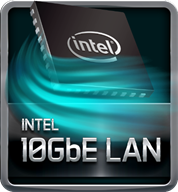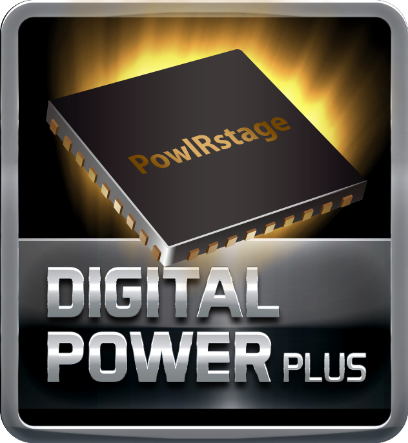Biostar's Z270GT9 Is Lone 200-Series Launch SKU, Offers 10Gbps NIC And NVMe SSD Bundle
Instead of releasing a wave of new motherboards based on Intel’s new Z270 chipset, Biostar focused its efforts on its Racing Z270GT9 flagship, which is bundled with an Intel NVMe SSD.
One unusual aspect about the Racing Z270GT9’s design is that all six of the PCI-E slots on the board are mechanically PCI-E x16 slots. Not all of these are electronically x16, but most PCI-E add-on cards require just an x1 data connection to function, even if they were designed to use an x4, x8, or x16 connection. Cards that are designed to be x4, x8, or x16, however, often cannot be used in a typical x1 slot because the connector on the card is physically too large. By making all PCI-E slots on the board mechanically x16, this problem is avoided.
It isn’t a perfect solution, however, as all of the PCI-E slots are black, and it will be difficult to know which slots operate at which speeds without looking it up in the manual.
To ensure you have ample storage connection options, Biostar equipped its Racing Z270GT9 with six SATA-III (6 Gbps) connectors, an M.2 Key M slot, and two U.2 ports. The M.2 and U.2 ports are all configured with a PCI-E 3.0 x4 data connection, which gives them access to up to 32Gbps of bandwidth.
It should be noted, however, that the M.2 Key M slot does not support SSDs longer than 80mm in length. The M.2 slot and any devices installed in it are hidden from view by a removable heatsink. This helps to keep an installed SSD cool and make the board look a bit more tidy, but at the cost of limiting the physical size of SSDs that can be used in the M.2 slot.
Biostar also opted to use an exceedingly high-end Intel X550 NIC on its Z270 flagship, which can transmit data at up to 10Gbps. This should be far more bandwidth than anyone really needs, as home internet connections of 10Gbps are exceedingly rare and not commercially available in most places. The board also has a slower Intel i219v gigabit NIC.
This motherboard should overclock reasonably well, as it has a 14-phase power design coupled with an IR digital PWM controller and a PowlRstage IC to keep a tight hand on power regulation. The VRMs are also cooled by two heatsinks, which are in turn cooled by a metal heat pipe.
Get Tom's Hardware's best news and in-depth reviews, straight to your inbox.
The onboard audio subsystem is powered by a Realtek ALC1220 audio codec that is shielded against EMI.
The audio shield, I/O shield, and two VRM heatsinks all have RGB LED lights to give the board a little color. Some people may wish the board had more LEDs, which seems to be a popular motherboard trend at the moment, and those people will be happy to know that the board has two RGB LED headers for installing additional lights.
Biostar also announced that it has five other boards that will be released soon, but the company did not release their specs. These boards include the Z270GT8, Z270GT6, Z270GT4, B250GT5, and B250GT3.
The Racing Z270GT9 is expected to be released on January 5 for $329. Biostar is also offering the board bundled with an Intel 600p 256GB M.2 for $399. As a part of the bundle, the SSD will come pre-installed on the motherboard. As this SSD currently retails for $93 on Newegg, this bundle saves you roughly $23 if you planned to purchase both pieces of hardware, and it saves you a little installation time.
| Biostar Racing Z270GT9 Motherboard | |
|---|---|
| CPU | LGA 1151 Processor |
| Power | 14 phase (Digital Power+) |
| Chipset | Intel Z270 |
| Solid Cap | 100% Solid |
| Memory | 4xDIMM, Support DDR4-3600+ |
| Expansion Slot | 6 x PCI-E x16 3.0 |
| Audio | 7.1ch Blu-ray Audio w/ Double Hi-Fi |
| LAN | Intel X550AT (10GbE LAN) / Intel i219V |
| Storage | -6 x SATA 6Gb/s-1 x M.2 32Gb/s (42/60/80mm)-2 x U.2 x4 32Gb/s |
| Video | -mDP -1 x HDMI 2.0-1 x HDMI 1.4b |
| USB 3.1 / 3.0 / 2.0 | -2 USB 3.1 (TYPE A+C )-6 USB 3.0 (2+4) -4 USB 2.0 (4+0) |
| Features | VIVID LED DJ / Lightning Charger / Smart Ear / BIO-Remote2 / BIOS Online Update |
-
CaedenV 2017 is going to be the year we finally see 10Gbps Ethernet coming to the home... next year I think we will see the first 'consumer' 10gig SoHo routers, then we will really be talking.Reply -
PancakePuppy Reply19110279 said:2017 is going to be the year we finally see 10Gbps Ethernet coming to the home... next year I think we will see the first 'consumer' 10gig SoHo routers, then we will really be talking.
With 8-port 10GBase-T switches still going for $1k, I don't think so. -
kal326 10Gb needs to make it more mainstream. SOHO unmanaged switches that just allow 10Gb links without all the fancy configuration options could come down in price if there were "prosumer" models. With a lot of system's running SSD, multi disk home NAS products becoming more common, and larger platter drives with sustained read/write over 140MB/s, 1Gb LAN connections are actually really a bottleneck. Sure the vast majority of home users would never be able to saturate a 10Gb link, but they could certainly hit about 30-40% with SSD to SSD machine transfers.Reply -
Crashman Uh, MJ, you do know that we frequently review motherboards with open-ended PCIe x1 slots, and that Intel even had an open-ended PCIe x4 slot with a separate hook bracket for the end of the card on one of its boards (back when it had boards).Reply
So, I think the presence of x16 slots was just to get you to notice. And that worked. But it created more problems than it avoided, as most competing boards can support at least two M.2 drives including at least one 110mm M.2.
-
IInuyasha74 Reply19114049 said:Uh, MJ, you do know that we frequently review motherboards with open-ended PCIe x1 slots, and that Intel even had an open-ended PCIe x4 slot with a separate hook bracket for the end of the card on one of its boards (back when it had boards).
So, I think the presence of x16 slots was just to get you to notice. And that worked. But it created more problems than it avoided, as most competing boards can support at least two M.2 drives including at least one 110mm M.2.
Hey Tom,
Yea, I was aware that often companies use open-ended x1 ports to support longer devices, but I still like this setup. It would hold longer cards more securely, and I suspect it would be easier for novices that can assemble a PC but don't know x16 cards would work in an x1 slot.
I actually need to update this soon as I found the actual connection on each slot. Surprisingly none of them are x1, they are all x4 or greater.
The M.2 slot bit is a bit of an issue. The one M.2 it has is limited to 80mm drives because of heatsinks used to cool the M.2 SSD. But really this board could have used another M.2, and they probably should have left that 2nd PCI-E slot off to make room for a second M.2 slot that can support 110mm SSDs. -
Crashman Reply
With the board being this expensive, I wouldn't be surprised if they used a repeater switch like the 48-lane PLX. And that would give them x16/x16. Or x8/x4/x4/x8/x4/x8 at most, with one of the x4's coming off the chipset. That would be a standard 3-way SLI board, but then you'd need an eight-slot case for the bottom card. Or it could even be x8/x4/x8/x4/x8/x4, which would get your three cards into a seven slot case but with no extra space to cool the top card.19115803 said:19114049 said:Uh, MJ, you do know that we frequently review motherboards with open-ended PCIe x1 slots, and that Intel even had an open-ended PCIe x4 slot with a separate hook bracket for the end of the card on one of its boards (back when it had boards).
So, I think the presence of x16 slots was just to get you to notice. And that worked. But it created more problems than it avoided, as most competing boards can support at least two M.2 drives including at least one 110mm M.2.
Hey Tom,
Yea, I was aware that often companies use open-ended x1 ports to support longer devices, but I still like this setup. It would hold longer cards more securely, and I suspect it would be easier for novices that can assemble a PC but don't know x16 cards would work in an x1 slot.
I actually need to update this soon as I found the actual connection on each slot. Surprisingly none of them are x1, they are all x4 or greater.
The M.2 slot bit is a bit of an issue. The one M.2 it has is limited to 80mm drives because of heatsinks used to cool the M.2 SSD. But really this board could have used another M.2, and they probably should have left that 2nd PCI-E slot off to make room for a second M.2 slot that can support 110mm SSDs.
-
CRamseyer I've talked about 10/5/2.5 GbE coming to the home for six months now. I met with Marvell at CES and the switches are coming. QNAP has a number of 10GbE-enabled NAS and ASUS has a $250 8-port switch with two 10GbE ports. The tech is coming but the big push was moved back to Computex :(Reply -
Crashman Reply
Then off to Computex you go!19140324 said:I've talked about 10/5/2.5 GbE coming to the home for six months now. I met with Marvell at CES and the switches are coming. QNAP has a number of 10GbE-enabled NAS and ASUS has a $250 8-port switch with two 10GbE ports. The tech is coming but the big push was moved back to Computex :(
-
bit_user I have a minor complaint, but one I feel is worth mentioning. NIC = Network Interface Card, as in a PCIe card. I think it would be more accurate to say it has a 10 GbE MAC (Media Access Controller).Reply -
Crashman Reply
Hey, you know how people can be with acronyms, they'll just change it to something less like "network interface controller". I've been having the same conversation for years about the use of VRM slang.19158640 said:I have a minor complaint, but one I feel is worth mentioning. NIC = Network Interface Card, as in a PCIe card. I think it would be more accurate to say it has a 10 GbE MAC (Media Access Controller).


